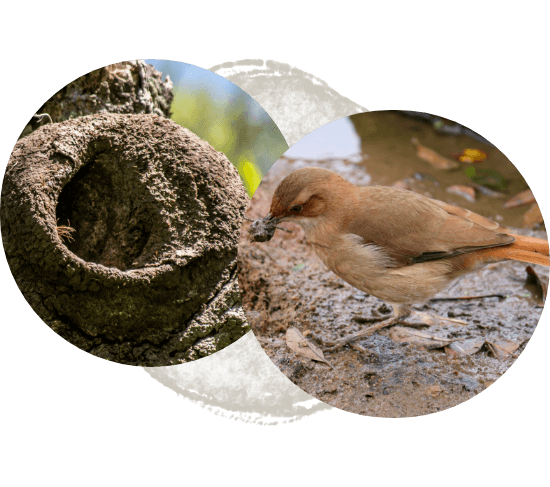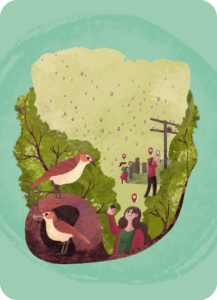
Citizen Science
Hornero 2.0
How long does nest building take?
This project is for every person! Download HORNERO App (on Android or iOS) and when you find horneros building their nest, record it and track the process!
App Release is coming soon!
We seek to understand the factors that determine when the horneros start and finish building their nest, as well as the macro- and micro-ecological factors that determine the time it takes them to do so.
JOIN!
This project is open to anyone!

Hornero 2.0
How long does nest building take?
¡Este proyecto es abierto a cualquier persona! Download HORNERO App (on Android or iOS) and when you find horneros building their nest, record it and track the process!
We seek to understand the factors that determine when the horneros start and finish building their nest, as well as the macro- and micro-ecological factors that determine the time it takes them to do so.
¡SUMATE Y PARTICIPA!
¡Este proyecto está abierto a cualquier persona! Bajate la App HORNERO (en Android o iOS) y cuando encuentres horneros construyendo su nido registralo y realizá un seguimiento del proceso!

What is citizen science?

Citizen science is a scientific methodology where scientists and people those outside the academic field cooperate to answer a common scientific question. In other words, it is a way of collectively building knowledge.
Another advantage of citizen science is that it enriches the interaction between science and society. Those of us who do science learn from the observations people make about the horneros and learn to communicate the results we find throughout the project in non-technical language. In turn, society learns about the work we do and discovers that doing science can be fascinating.
Other citizen science projects
Hornero 1.0
Understanding nest asymmetry in hornero's nest
- Project completed -
Horneros have a particular characteristic when it comes to building those beautiful mud nests. When the entrance is on the right, the incubation chamber where the chicks are is counterclockwise. If the entrance is on the left, the chamber follows a clockwise direction. In other words, they have a bilateral asymmetry.
In 2018 and 2019, we developed a mobile application to determine whether this asymmetry occurs randomly, meaning if it happens indiscriminately, or if there is a population-level tendency for a side preference. Additionally, we wanted to understand which environmental factors might influence or not influence the construction. More than 1,000 people participated in Argentina, Uruguay, Brazil, Bolivia, and Paraguay, and we collected information on over 12,600 nests.
We found that most ovenbird nests have their entrance facing to the right, and there is no apparent environmental variable that seems to explain this asymmetry. The construction of the nest is not random. This opens up the possibility that it is either culturally learned, meaning that ovenbirds learn from other ovenbirds to create a particular type of architecture, or that there is some genetic condition that determines the construction form.
Publication Adreani et al. 2022





